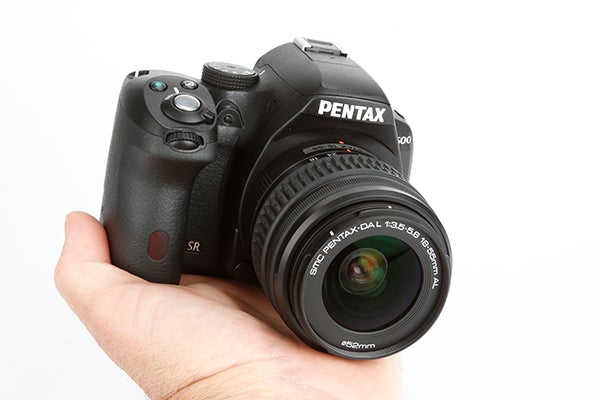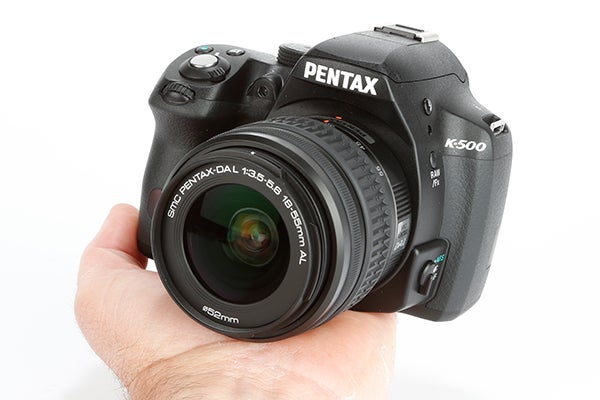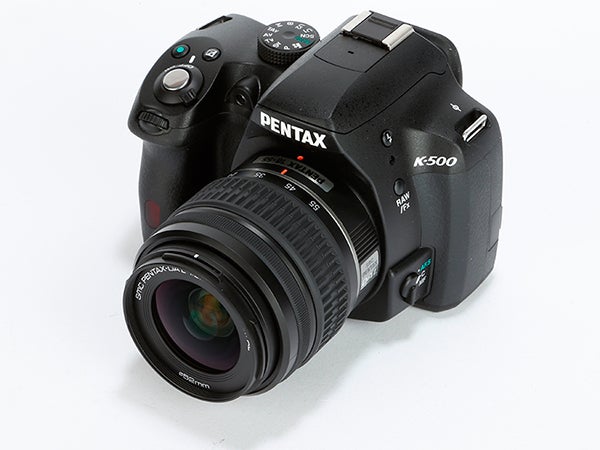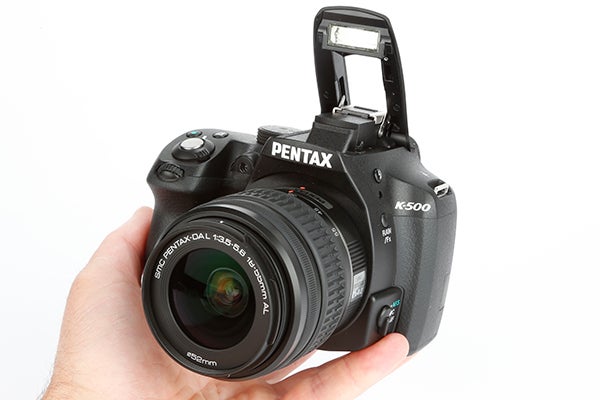Pentax K-500 Review
Pentax K-500
It has better specs than its nearest rivals, but is it acutally better?

Sections
- Page 1 Pentax K-500 Review
- Page 2 Design and Performance Review
- Page 3 Image Quality and Verdict Review
Verdict
Pros
- Good image quality
- Large and comfortable grip
- Strong features compared to rivals
Cons
- Noisy AF with kit lens
- Dated interface
- No visible AF point in viewfinder
Key Specifications
- Review Price: £449.00
- 16.2MP APS-C CMOS Sensor; 3-inch, 921k-dot LCD screen; Sensor-based image stabilisation; ISO 100 - 51200; 1920 x 1080 at 30fps
What is the Pentax K-500?
The big two of Canon and Nikon currently dominate the entry-level DSLR market, although the other major manufacturers continue to compete in releasing impressive models. One such model is the new Pentax K-500. It features a strong specification at a price point that is sure to have entry-level purchasers taking a keener look. Let’s see if it manages to break the established duopoly.
Not what you’re looking for? Head to our best DSLRs round-up for alternatives.

Pentax K-500 – Features
The Pentax K-500 has a reasonable 3-inch LCD screen on the rear of the body, complete with a resolution of 921k-dots. What may disappoint some is that it sits flush to the body rather than being of the vari-angle variety, as those found on some of its competitors.
One of the areas where the K-500 trumps its big two competitors is its viewfinder coverage. The viewfinder offers field of view of near-enough 100%, as opposed to the 95% found on the Canon EOS 600D and Nikon D3200.
Although 5% doesn’t sound like a big difference, when you’re out shooting in the field and come to consider your images back on the computer you’ll be surprised what can sneak in to the sides of the shots.
The viewfinder also features a 0.92x magnification, which is preferable to the 0.85x and 0.8x found on the 600D and D3200 respectively.

The solid level of features includes a fairly comprehensive AF system. The K-500 features Pentax’s SAFOX IXi AF sensor module; in real terms, this unit features 11 AF points of which 9 are the more sensitive cross-type variety.
This number is far more comprehensive than those found on the 600D or the D3200 and as such should offer a better level of performance across the frame.
The K-500’s sensor is the same unit as seen in numerous previous Pentax DSLRs. The sensor itself is the 16.28MP APS-C module, which offers an impressively wide ISO range of 100 – 51,200.
The sensor offers the welcome capability to shoot both the Pentax .PEF format Raw files alongside the Adobe DNG format, meaning there’s direct support for Raw files in the Adobe Camera Raw software.
The sensor also features sensor-shift stabilisation that, Pentax claims, allows for up to three stops of image stabilisation and thus will aid sharp images in difficult conditions.

Continuous JPEG capture is another impressive area of the K-500’s specification. It shoots at up to 6fps, which is faster than both the Nikon D3200 (4fps) and the Canon EOS 600D (3.7fps), thus making the K-500 a good option for those wanting to try sports photography.
One final interesting area of the specs is the battery chamber. The K-500 is bundled with a D-LI109 Li-ion chargeable battery, but the chamber supports also 4 AA batteries through an optional D-BH109 battery holder. This is a welcome feature as it allows you to readily replace a dispensed rechargeable battery with affordable off-the-shelf units on the go.

